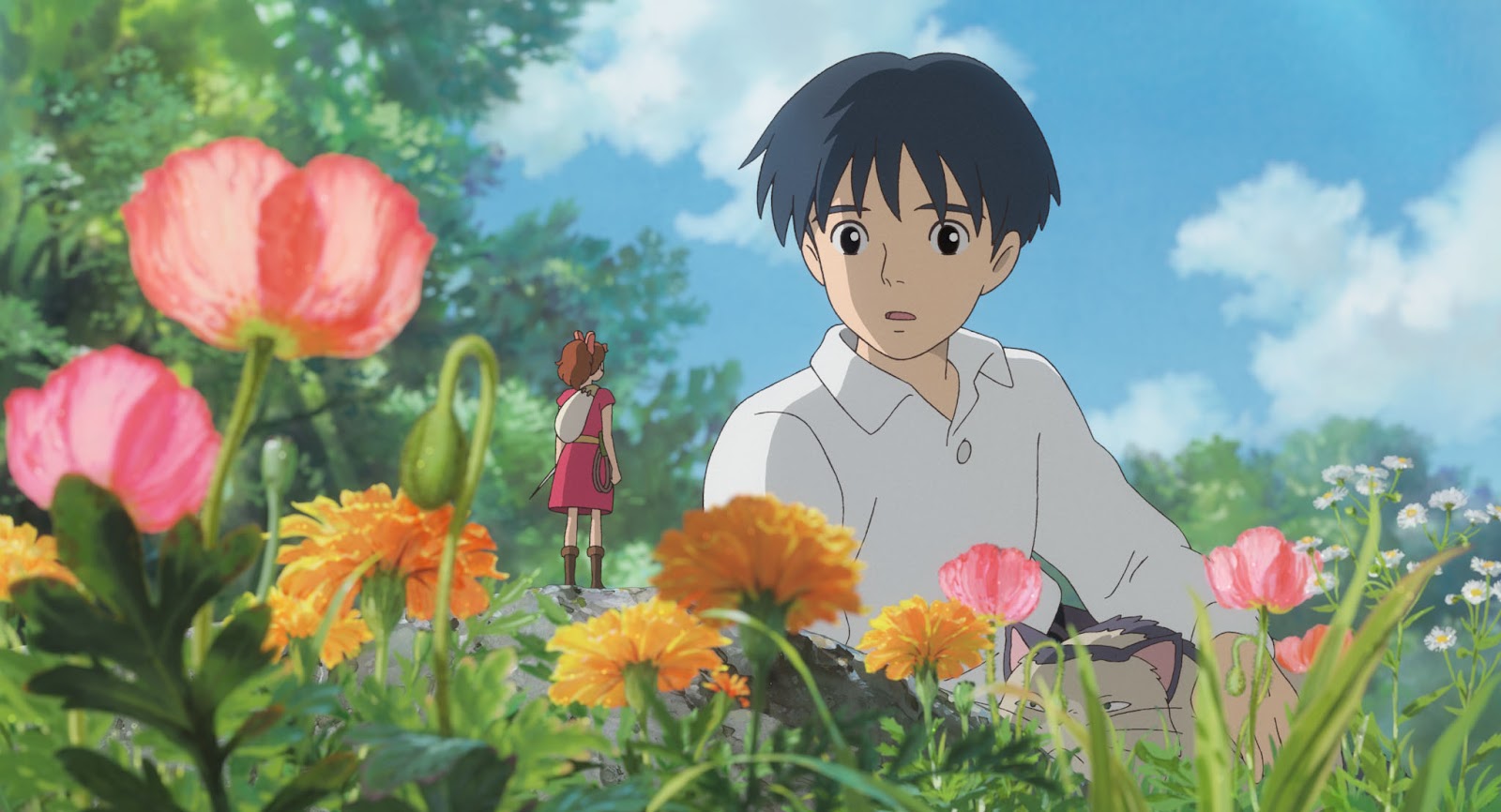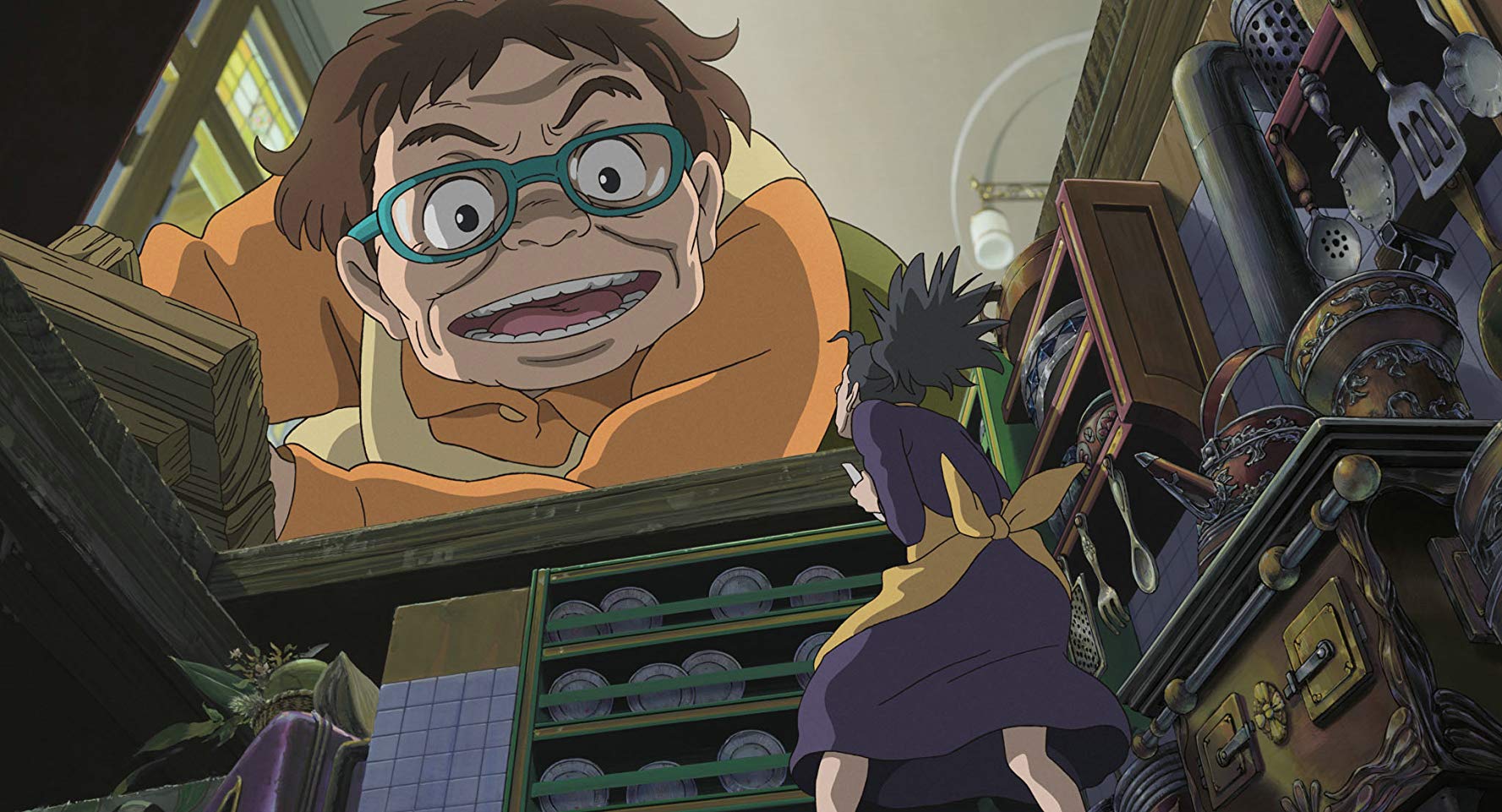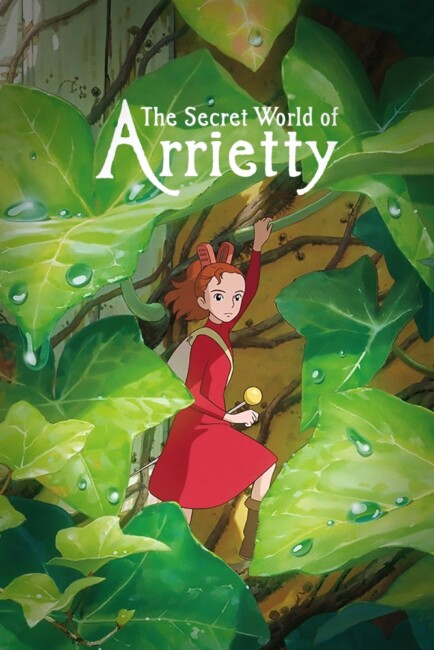aka The Secret World of Arrietty
(Kari-Gurashi no Arietti)
Japan. 2010.
Crew
Director – Hiromasa Yonebayashi, Screenplay/Planning – Hayao Miyazaki, Based on The Borrowers Books by Mary Norton, Producer – Yoshio Suzuki, Photography – Atsushi Okui, Music – Cecile Corbet, Animation Director – Akihiko Yamashita, Art Direction – Yoji Takeshige & Noboru Yoshida. Production Company – Studio Ghibli.
Plot
Sho, an ill teenage boy, is sent away to stay in a house in the countryside. Inside the house live a family of Borrowers, tiny people only a few inches high who have made a home inside the wainscoting of the walls and live by ‘borrowing’ unmissed items from the humans. The daughter Arrietty turns fourteen and is taken on her first borrowing mission by her father Pod. However, in the course of doing so, she is seen by Sho and they flee. Sho leaves the cube of sugar that she drops out for her but this puts Arrietty’s parents into a panic, thinking that they will now have to leave and find a new home because they have been discovered by humans. Arrietty goes to plead with Sho to leave them alone and the two end up befriending the other as he saves her from a crow attack. However, Sho’s attempts to help them by providing them with the kitchen from a dollhouse instead causes his caregiver Haru to discover the Borrowers’ hiding place and become determined to capture them.
Arrietty comes from Studio Ghibli, the production company founded by Hayao Miyazaki, the director of classic anime works such as The Castle of Cagliostro (1980), Nausicaa and the Valley of the Wind/Warriors of the Wind (1984), Laputa: Castle in the Sky (1986), My Neighbor Totoro (1988), Kiki’s Delivery Service (1989), Porco Rosso (1992), Princess Mononoke (1997), Spirited Away (2001), Howl’s Moving Castle (2004), Ponyo on a Cliff By the Sea (2008), The Wind Rises (2013) and The Boy and the Heron (2023). Miyazaki had apparently wanted to make Arrietty himself ever since the 1970s but with his constant dithering over retirement and then rescinding that in the last few years, he eventually handed directorial reins over to Hiromasa Yonebayashi, an animator at Studio Ghibli since Princess Mononoke, who makes his directorial debut here.
Arrietty is based on The Borrowers books by British author Mary Norton. Norton began publishing with The Borrowers (1952). This led to four sequels The Borrowers Afield (1955), The Borrowers Afloat (1959), The Borrowers Aloft (1961) and The Borrowers Avenged (1982). The first film adaptation of these was The Borrowers (1973), a little seen tv movie for the Hallmark Hall of Fame that relocated the story to America and, although reasonably faithful, suffered from poor special effects. The second and best adaptation was The Borrowers (1993-4), two sets of six-part half-hour British-made tv serials for the BBC that covered the first four books. These were very faithful to the books, featured modest but excellent effects and proved a considerable delight. There was also the big-budget film adaptation The Borrowers (1997), which pitched the stories for American audiences but turned them into a special-effects driven comedy vehicle. Subsequent to this, there was also The Borrowers (2011), a BBC tv movie version starring Christopher Eccleston.

Arrietty is a loose adaptation of The Borrowers. All the essential elements of the first Mary Norton book are there – Arrietty going out into the world to become a borrower for the first time, her friendship with a human bean boy who is ill (recovering from rheumatic fever in the book, a heart condition here), his bringing pieces of a dollhouse as gifts for them, the belief that they are the last borrowers left in the world, the maid (his caregiver in the film) discovering the borrowers’ home and determining to catch them. The script also mixes some aspects from other books – taking the character of Spiller from The Borrowers Afield, for instance, and at the end having them set off on the tea kettle journey from The Borrowers Afloat.
Arrietty is essentially the very British world of Mary Norton’s books, which took place in an archetypal English country garden, translated into the world of shoujo anime, something that proves surprisingly conducive when you think about it. Hiromasa Yonebayashi states that while directing Arrietty he asked Hayao Miyazaki for advice every step of the way.
It is no surprise then that the finished film could easily be a Miyazaki film in all respects. It is directed in the same ligne clair style that Hayao Miyazaki has preferred. Hiromasa Yonebayashi adopts the same intimately quiet and contemplative style that Miyazaki does, always concerned about harmony with nature. In particular, the home and its garden filled with magical creatures feels as though it could be next door to the same home where My Neighbor Totoro took place. Indeed, the character of Sho, ill and feeling sadly distant from his parents but discovering something magical hidden in the garden, is very much a variation of the children in My Neighbor Totoro, which Hayao Miyazaki always said was a story about his own childhood.

There is a considerable magic to Arrietty. It never quite ranks up there with some of Hayao Miyazaki’s masterworks such as My Neighbor Totoro, Kiki’s Delivery Service, Princess Mononoke or Spirited Away – more at the level of perfectly excellent second rung efforts such as The Castle of Cagliostro, Porco Rosso or Howl’s Moving Castle. Arrietty’s first journey down into the house is a marvellously fear and awe-fraught journey – walking along the nails in the wainscoting, a system of pulleys being used to whisk them up into the darkness, the vast dark chasm of the pantry and the father painstakingly climbing up the sides of the furniture with sticky tape attached to his arms and legs, the journey through the exquisitely set world of the dollhouse into the bedroom of Sho to steal a tissue where he wakes up and whispers to them not to be afraid as they flee, dropping the all-essential sugar cube. There is another magical scene set in the borrowers’ home where the walls shake like an earthquake, the roof is lifted off and then suddenly a giant hand deposits the kitchen from the doll’s house. The friendship that grows between Arrietty and Sho comes with all the tender loveliness and soft intimacy that Studio Ghibli do so well. The results are quite magical and lovely.
Hiromasa Yonebayashi subsequently went onto direct the ghost story When Marnie Was There (2014) for Studio Ghibli, followed by Mary and the Witch’s Flower (2017) and one of the episodes of the anime anthology Modest Heroes (2018).
Trailer here


